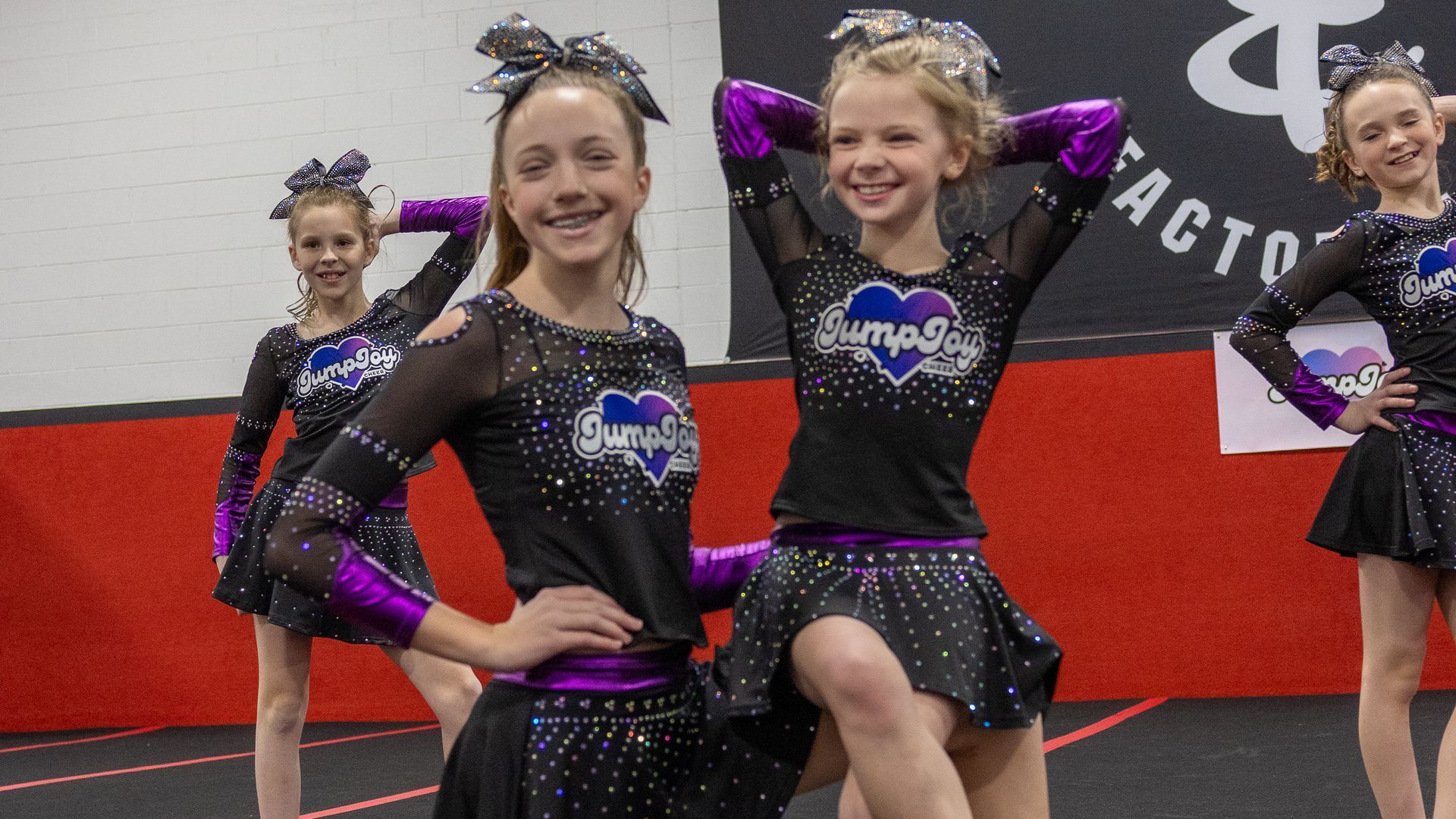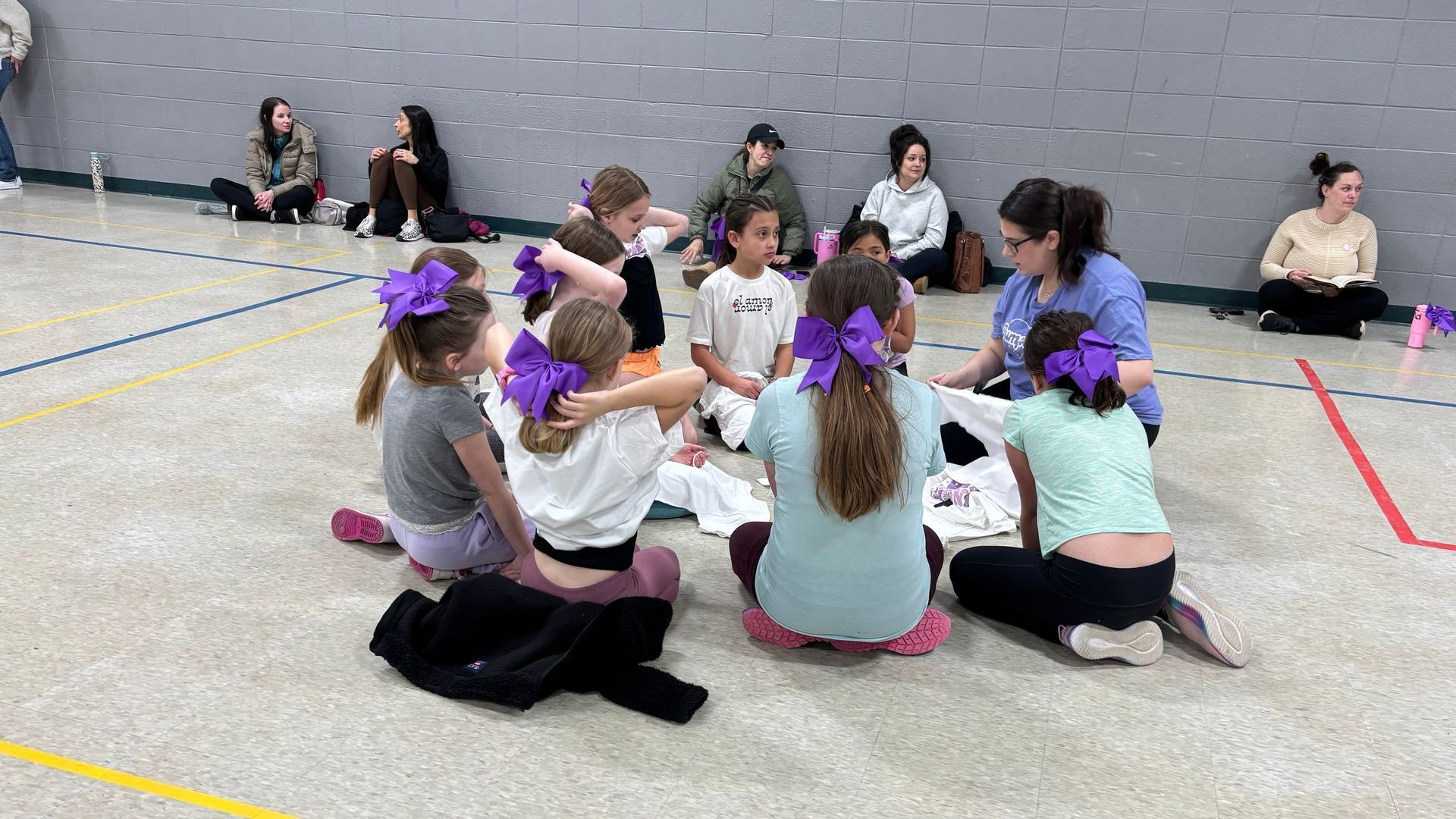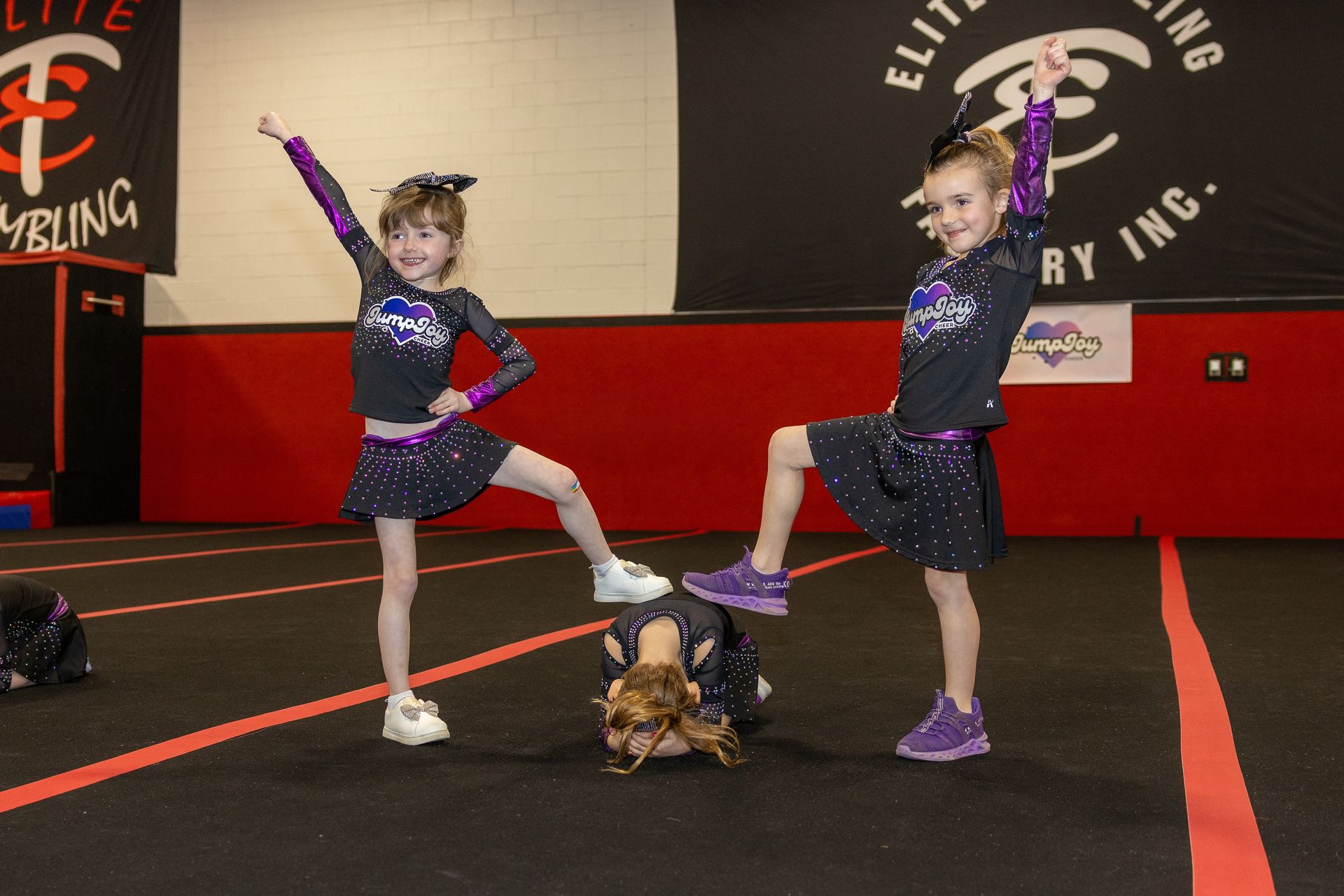🎉 Cheerleading Levels Explained: A Complete Guide for Lake Country Families
From Level 1 to Level 7 — What Each Step Means for Your Cheerleader

If your child is new to All-Star cheerleading — or you’re just trying to figure out what all the levels mean — welcome! At Jump Joy Cheer, serving Lake Country and Waukesha County, we’re here to make the sport fun and easy to understand for families.
🏅 What Are Cheerleading Levels?
In All-Star cheer, there are seven levels that build on each other. These levels help coaches match athletes to routines that fit their current skills in stunting and tumbling.
Here’s the biggest myth: Higher levels don’t mean “better” kids — every level is filled with skilled, hardworking athletes! The level just matches the team’s overall skill set so athletes can progress safely, gain confidence, and master new skills the right way.
⭐ Level 1: The Foundation
What to expect:
- Flyers are lifted up to
prep level (shoulder height). One-legged stunts are allowed at prep level if they’re braced or lower without a brace.
- Tumbling stays simple: rolls, cartwheels, round-offs, and walkovers — all with contact to the floor for safety.
- Routines are creative and fun while teaching perfect technique.
✨ Level 2: Extending the Basics
What’s new:
- Flyers can be lifted into
two-legged extension stunts (fully overhead).
- Liberty stunts at prep level, simple twists up to ½ twist, and basic basket tosses.
- Tumbling introduces the big milestone:
back handsprings — standing or round-off.
🔥 Level 3: Twists & Tucks
What changes:
- Flyers can do
one-legged stunts at extended level, with twists up to ½ twist.
- Basket tosses can include simple skills like toe touches or full twists.
- Tumbling introduces
tucks, aerials, and tumbling series like multiple back handsprings.
🎯 Level 4 & Level 4.2: Double the Skills
Level 4.2:
- Combines
Level 4 stunts with
Level 2 tumbling — perfect for strong stunters still mastering tumbling.
Level 4:
- More spins, inversions, and dismounts in stunts.
- Tumbling includes
layouts, punch fronts, standing tucks, and more advanced passes.
- Basket tosses can include multiple tricks like kick fulls and doubles.
🌟 Level 5: The Elite Edge
This level often includes Worlds teams!
- Stunts: More twisting and flipping, including double twist dismounts.
- Tumbling: Adds
full twists to running passes.
- Baskets: Three skills allowed, like double twists (except for kick doubles).
🚀 Level 6: The Ultimate
This is where skills really multiply!
- Double-ups in stunts and 2¼ twist dismounts.
- Tumbling:
Double fulls and standing fulls.
- Baskets: Complex kick doubles and triples.
🏆 Level 7: The Pros
The highest level in All-Star cheer — think college or pro-style!
- Stunts:
Free flipping (like rewinds) and skills where flyers flip without holding bases.
- Baskets: Extreme flips like double fulls, kick triples.
- Tumbling: Back handspring to double, standing fulls and doubles.
- Pyramids: Allowed up to
2½ stories high — a prep-level flyer can hold up another flyer!
📍 Why Jump Joy Cheer?
At Jump Joy Cheer, we’re proud to be a safe, fun, and positive place for athletes in Lake Country and Waukesha County to grow their skills step-by-step. Our Level 1 teams build the strong foundation kids need to safely master skills for every level above — all while making lifelong memories and friendships!
💙 Ready to Join the Fun?
If you’re ready for your child to learn teamwork, confidence, and amazing cheerleading skills, Jump Joy Cheer is here for you.
👉 Have questions about levels, teams, or enrollment? Contact us today!
Let’s get your athlete started on their cheer journey — and watch them fly!
🔗 Click here for more scoring info.
✅ Bookmark This Blog!
We hope this Level Guide helps families across
Lake Country, Wisconsin, and
Waukesha County better understand All-Star cheerleading. Be sure to bookmark this page so you can come back anytime — and share it with new cheer parents too!
Jump Joy Cheer Blog


